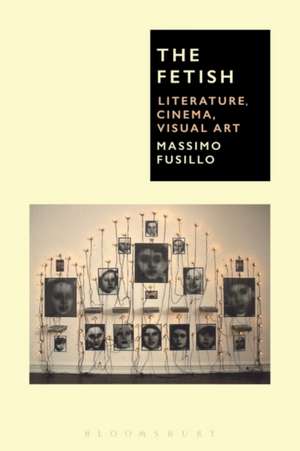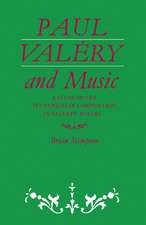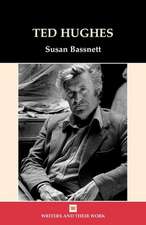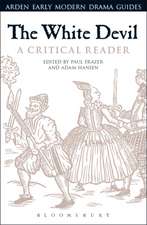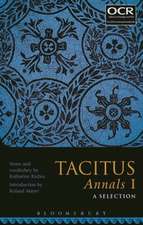The Fetish: Literature, Cinema, Visual Art
Autor Professor Massimo Fusilloen Limba Engleză Hardback – 20 sep 2017
Preț: 658.11 lei
Preț vechi: 944.08 lei
-30% Nou
Puncte Express: 987
Preț estimativ în valută:
125.93€ • 134.66$ • 104.100£
125.93€ • 134.66$ • 104.100£
Carte tipărită la comandă
Livrare economică 18 aprilie-02 mai
Preluare comenzi: 021 569.72.76
Specificații
ISBN-13: 9781501312359
ISBN-10: 1501312359
Pagini: 200
Dimensiuni: 152 x 229 mm
Greutate: 0.59 kg
Editura: Bloomsbury Publishing
Colecția Bloomsbury Academic
Locul publicării:New York, United States
ISBN-10: 1501312359
Pagini: 200
Dimensiuni: 152 x 229 mm
Greutate: 0.59 kg
Editura: Bloomsbury Publishing
Colecția Bloomsbury Academic
Locul publicării:New York, United States
Caracteristici
As the first book in English on object-fetishes in literature and visual media, it will be of cross-disciplinary appeal across comparative literature, visual studies, cultural studies, psychoanalysis, and queer aesthetics
Notă biografică
Massimo Fusillo is Professor of Literary Theory and Comparative Literature at the University of L'Aquila, Italy, where he is Director of the Ph.D. Program in Literary and Cultural Studies and Vice Chancellor for Cultural Affairs. He was Fulbright Visiting Professor at Northwestern University, USA, and Invited Professor at the PhD Program in Comparative Literature of Paris 3. He is a member of the Executive Council of the International Comparative Literature Association (ICLA/AICL).
Cuprins
Preface: Creativity Is In the DetailsIntroduction: Object and Fetish: Theory, Intersection, Vision1. The Object of Seduction2. The Memorial Object: Between Wound and Catharsis3. The Magic Object: Animating the Inanimate4. Creating Worlds: The Mythopoetic Power of Objects5. Theatricalizing the Fetish-Object6. The Alterity of Matter7. The Object-IconBibliographyIndex
Recenzii
Brilliantly debunking received understandings of fetishism as an individual perversion or as a consumerist obsession, and effectively severing it from its ideological and moralistic anchorings, Massimo Fusillo theorises the fetishist gaze as an inexhaustible site of creative production and compares it to the processes of literary composition and artistic creation. Richly interdisciplinary and convincingly argued, using philosophy, psychoanalysis, aesthetics, anthropology, and feminist, queer, and postcolonial theory as critical frameworks, Fusillo draws examples across a wide variety of genres-literature, film, the visual arts, photography, popular culture, and performance-to demonstrate the ways in which fetishism and artistic creativity project passions, impulses, and memories on to everyday objects and produce alternative worlds. Original and highly innovative in content and style, the book's relational approach to the fetish challenges allegiances to hierarchal knowledge and absolute identities, compelling a radical rethinking of our critical paradigms for the comparative study of literature and culture.
This is a remarkably well-integrated volume with a clear purpose: to redefine and interpret 'the fetish' in a broad range of works, from Marx and Freud to contemporary cinema. It offers brilliant exercises in close reading and unassailable overall arguments. It should establish itself as an important reference point in literary and cultural theory.
Brimming with new ideas and examples, Massimo Fusillo's thought-provoking The Fetish leads us into a magic land where concrete objects radiate boundless energy. Seductive or violent, theatrical or incomprehensible, these objects inhabit the works of art and literature, be they realist, modernist, or post-modernist, and fill them with an irresistible power to attract. The most respectable traditional literature and the oddest contemporary art are thus shown to share crucial common interests.
This is a remarkably well-integrated volume with a clear purpose: to redefine and interpret 'the fetish' in a broad range of works, from Marx and Freud to contemporary cinema. It offers brilliant exercises in close reading and unassailable overall arguments. It should establish itself as an important reference point in literary and cultural theory.
Brimming with new ideas and examples, Massimo Fusillo's thought-provoking The Fetish leads us into a magic land where concrete objects radiate boundless energy. Seductive or violent, theatrical or incomprehensible, these objects inhabit the works of art and literature, be they realist, modernist, or post-modernist, and fill them with an irresistible power to attract. The most respectable traditional literature and the oddest contemporary art are thus shown to share crucial common interests.
